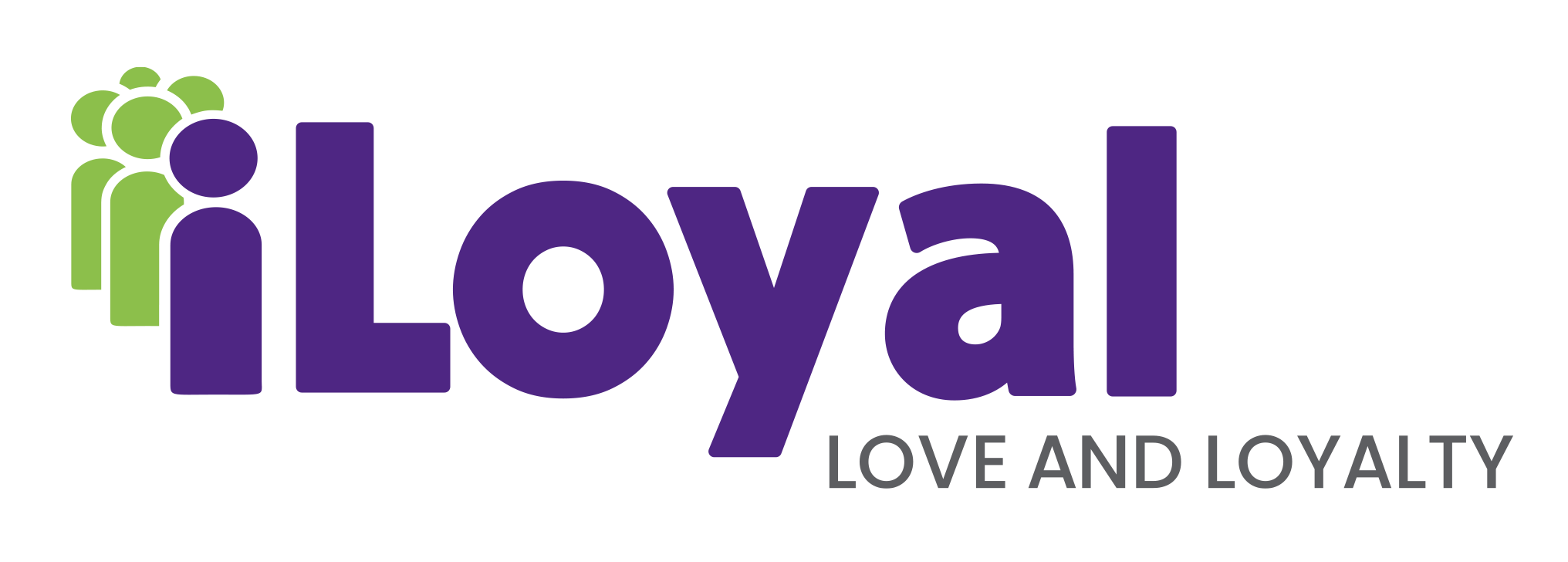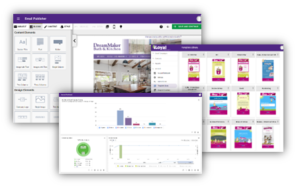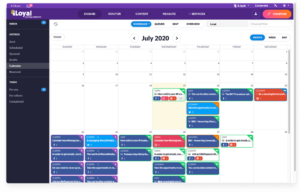LinkedIn
Facebook
Twitter
Reddit
Tumblr
Email
Print
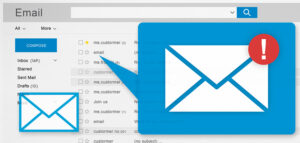
How to Improve Email Deliverability and Reach the Inbox

How to Improve Email Deliverability and Reach the Inbox
Want to improve email deliverability and get even more out of your campaigns? Or maybe you’re experiencing deliverability problems and would like to make sure your offer finally reaches your customers’ inboxes? Whatever the situation you’re in, this article will come in handy.
Below, you’ll find 17 tactics to help you improve email deliverability, sender reputation, and email engagement.
1. Evaluate Your Situation
Before you do anything else, it’s best to start by analyzing the situation you’re in. Based on this analysis, you’ll get to decide what you want to do next.
Begin by checking your deliverability, and evaluating your list quality and the results of your last few campaigns.
After reviewing these areas, you should know:
- • If you’re listed on any of the major blacklists
- • If your authentication (SPF, DKIM, DMARC) is set up properly
- • How engaged your contacts are
- • What percentage of your contacts are inactive
- • What percentage of your contacts unsubscribe or mark your emails as spam
- • How your results compare to the email industry benchmarks
We’ll refer to these areas later on in this article, so make a note of your answers.
2. Get Your IP Removed from Email Blacklists
If you’ve found your IP or mailing domain listed on any of the major blacklists (you can check that using reputation management tools like MxToolbox), you can contact the list admin. Ask them for help and advice on how you can improve your mailing practices, and often they’ll be glad to provide you with additional guidance.
Whatever the outcome, there’s usually a reason why you’ve been blacklisted. If you don’t change your processes and how you run your email campaigns, you may end up on that list again. So, keep reading this post and treat this step as a short-term solution.
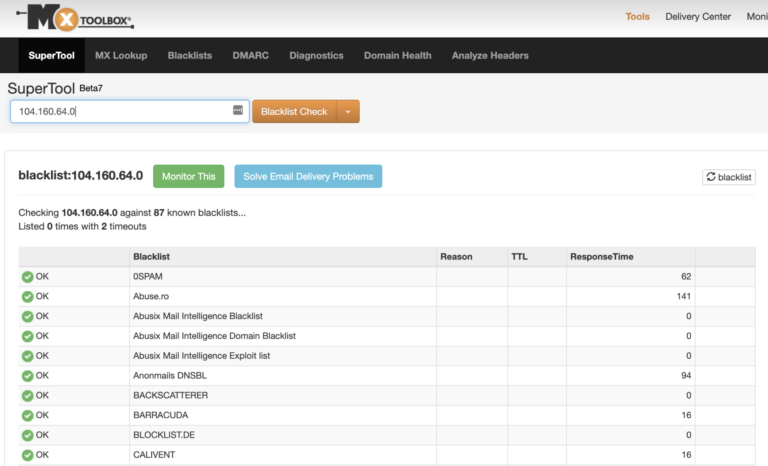
Get started with iLoyal Email Studio
Plans that flex to your needs and budget. Do it yourself or ask iLoyal for help with templates, graphics, list management, and more.
or call us at
3. Create a Unique Brand Identity
Having a strong and unique brand identity can help you increase your recipients’ engagement with your emails. And since engagement is an important element of email deliverability, let’s look at ways how you can improve your brand identity:
- • Use your own custom domain to send your email campaigns (as opposed to free email domains like Gmail)
- • Use consistent Email fields (From, Name, and Address) across all your campaigns
- • Use the same design across all your marketing channels (color scheme, fonts, graphics)
- • Use Brand Indicators for Message Identification (BIMI) and add your brand’s logo to your emails
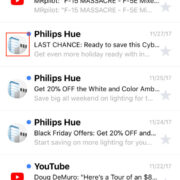
4. Make Sure Your Emails Are Authenticated Properly
Another thing that often causes email deliverability issues – and can be easily fixed – is related to authentication.
Internet Service Providers (ISPs) like Gmail our Outlook may filter out or reject your emails if they seem suspicious.
This is related to who you are, how you’re sending your emails and what’s inside them. For now, we’ll only look at the first two factors.
Here’s what you can do, if you want to be seen as a trustworthy sender:
- • Send your emails using a company domain instead of a publicly available freemail domain (like Gmail or Comcast)
- • Use proper authentication protocols like Domain Keys Identified Mail (DKIM), Sender Policy Framework (SPF), Domain-based Message Authentication, Reporting, and Conformance (DMARC), and Indicators for Message Identification (BIMI)
- By sending email campaigns using a custom domain, you’ll build its reputation. If you follow email marketing best practices, this reputation should good leading to high deliverability.
By setting up the authentication protocols correctly, you’ll show the ISPs that you’re the rightful sender and that your messages haven’t been hijacked along the way.
The latter is especially useful if you’re using email marketing software to send email campaigns on your behalf. Authentication can further improve email deliverability and build your reputation for ISPs.
5. Re-engage the Less-Active Contacts
In the process of evaluating your recipient engagement (step #1), you might have identified subscribers who’ve only recently become inactive. For example, people who haven’t opened or clicked in any of your emails in the last three months.
Since this group can still have business potential, you should try winning them back. The most popular way of doing this is to run a win-back campaign. This can be done manually or automatically.
Reengagement campaigns should be treated as a hail Mary pass, the last attempt to get your recipients back, and if it fails – they’re gone.
There are 3 key factors that you need to take into account here – timing, form, and incentive.
- • Timing depends mostly on your sending schedule. Basically, the more often you send, the shorter you should wait with your reengagement. For example, if you send once a week you should not wait longer than 3 months; if you send once a month you can wait as long as an entire year.
- • The ideal option here is a triggered personal email. Using the same example as above, the day your inactive contact reaches three months, without action, they automatically get a reengagement email. If you can’t set that up, then you should go for a reengagement campaign every three months for all inactive contacts at once. If they still fail to engage, you should remove them from your list.
- • As for the form, there’s a number of different approaches. Try making a big change in the content. This is the one message that should stand out from the rest. It should be unique to the point that your contact automatically sees they received something different than your usual mailing.
Here are some ideas:
- Design a different email template and ask “were you waiting for a change?”
- Adapt your existing template but send it as a personal email from a staff member
- Send a message titled “Is this a goodbye?” and give your contacts a chance to change their mind
Inactive contacts usually need some kind of an incentive that will help them decide to stay. A discount, a freebie, a gift basket. Something that shows that you appreciate them as your customers and are willing to fight for them, so if they still decide not to engage you can pat yourself on the back and say “I tried my best.”
6. Prune Your Email List
List hygiene is an important part of email deliverability. For your list to be considered hygienic, you need to continuously remove the deadweight and engage those who are active.
Since we talked about reengaging contacts who still hold business potential in step #5, we’ll now look at those who you should consider removing from your lists.
Here are two segments we have in mind when we say deadweight:
The first one consists of people who specifically said they no longer want to receive emails from you, or their email addresses generated a bounce. They should be removed from your list immediately, no matter how big the segment.
The second group consists of people who haven’t engaged with your communication in a long time (e.g., a year or so). Most often, these contacts have no business potential. But they do pose a huge risk to your deliverability.
One reason is that these addresses may have been turned into spam traps or honey pots as they’re often called. The second reason is that they may be harming your results.
7. Partner Up with a Reliable Email Service Provider (ESP)
Email templates, features, and UX aren’t the only things that distinguish a good email service provider. A reliable ESP will also help you maintain strong email deliverability.
If you’re not sure whether your current email marketing platform is the right one, check if it:
- • Has relationships with all the major Internet Service Providers
- • Has set up feedback loops with all the key mailbox providers
- • Automatically handles bounces, unsubscribes, and spam complaints
- • Does not allow its users to upload purchased or scraped lists
- • Participates in all major ISP industry initiatives to prevent spam, like MAAWG, EEC, and ESPC
- • Is compliant with all the major regulations such as CanSPAM, CASL, GDPR, and CCPA
- • Lets you authenticate your custom mailing domain
- • Authenticates your emails with SPF and DKIM
- • Has robust Deliverability and Compliance Teams onboard
- • Uses IPs with high reputation
- • Uses AI to identify potential email deliverability issues
- • Provides you with the Data Processing Agreement
- • Has servers in the country you’re most interested in
- • Ensures all your data is safe and secure
- • Regularly updates its tools to adapt to the latest industry standards
- • Has a good and established reputation on the market
Share or save this article.
LinkedIn
Facebook
Twitter
Reddit
Tumblr
Email
Print
8. Give Your Recipients a Choice
Here’s another way you can decrease your email list churn and improve email deliverability – give your subscribers a choice!
Marketers have long known they should be personalizing their customer experience. But they rarely do that when it comes to the frequency and content of their email campaigns.
If you want to offer a better experience than most email marketers, consider creating a preference center or including extra checkboxes in your web forms that’ll let your contacts express their mailing preferences.
You could also include it on your unsubscribe page so that your customers get a chance to opt-down rather than opt-out from your email subscription.
This step may seem difficult to implement and maintain, but it gives you the chance to keep your customers engaged for longer. Plus, it gives them the sense that they’re in charge, which can in turn improve how they perceive your brand.
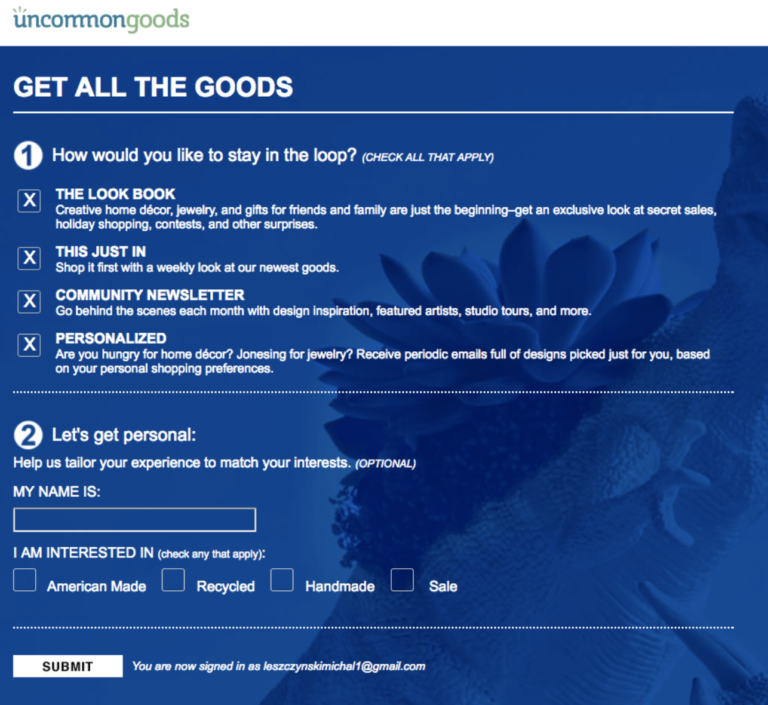
9. Make Unsubscribing from Your List Easier
This may sound counterintuitive, but the fact that people are unsubscribing from your list isn’t a big problem. Why? Because that means they’re actually receiving your emails – they’re just not into them.
The problem starts when they’re not unsubscribing but either (a) filtering out your messages, or worse – (b) reporting them as spam. Both of these are a big challenge, but if you’ve followed the advice we gave in #5, you should have already dealt with those who stopped reading your emails.
When it comes to managing spam complaints, the situation is slightly harder because it requires changes in multiple places.
First of all, you should review your subscription process and make sure that everything’s transparent and clear. Your contacts need to fully understand what they’re signing up for and what content you’ll be sending them. Add this information to your landing pages, web forms, thank you pages, and in your email footers.
Secondly, you’ll need to make unsubscribing from your list easier. In most cases, it’s enough if the unsubscribe process doesn’t require additional steps, like logging into your platform, and that the removal link can be easily found in your emails. In extreme cases, bring your unsubscribe link to the above the fold section – maybe even into the preheader.
This may not seem ideal from a marketer’s perspective. But if you take into consideration that each spam report affects your deliverability – for that specific campaign and in the future – having more unsubscribes doesn’t sound like such a bad idea.

10. Implement Double Opt-in
The debate around double opt-in vs single opt-in has been going on for years.
It comes down to this:
- • If you use double opt-in, you’ll get a higher quality list, but it’ll be smaller. From what we’ve seen, you may see roughly 30% fewer subscriptions.
- • While single opt-in leaves you with more contacts to reach out to, the chances are that people who end up signing up won’t be as engaged.
So, how should you go about this?
Do the math. But keep this in mind:
- • Based on the results we publish in the Email Marketing Benchmarks report, industries where double opt-in is the most popular get the highest email engagement rates.
- • Using double opt-in is recommended if you’re experiencing deliverability issues or you’re seeing a big number of bots signing up through your web forms.
- • If anyone ever asks about how you collect email consents, double opt-in gives you additional proof that your contacts have made a deliberate decision to join your list.
11. Adjust Your Email Frequency
Email frequency plays a big role in building high customer engagement and email deliverability. Here’s why.
If you haven’t contacted your subscribers for a long time and then suddenly send them an email blast, they may take your message as irrelevant or even unsolicited. And that can lead to high spam complaint rates.
If, on the other hand, you’re sending too many emails, your recipients may feel overwhelmed and annoyed. If you’re lucky – they’ll unsubscribe. If you’re not – they’ll filter out your messages or report them as spam.
In other words, both too quiet and too busy communication schedules are bad.
So how often should you email your subscribers? Sadly, there’s no golden rule for that.
There are a few ways you can find the right email frequency. Some are more scientific and focus on maximizing the number of conversions. Others involve asking your customers for feedback or giving them the option to manage their mailing preferences, like we discussed in #6.
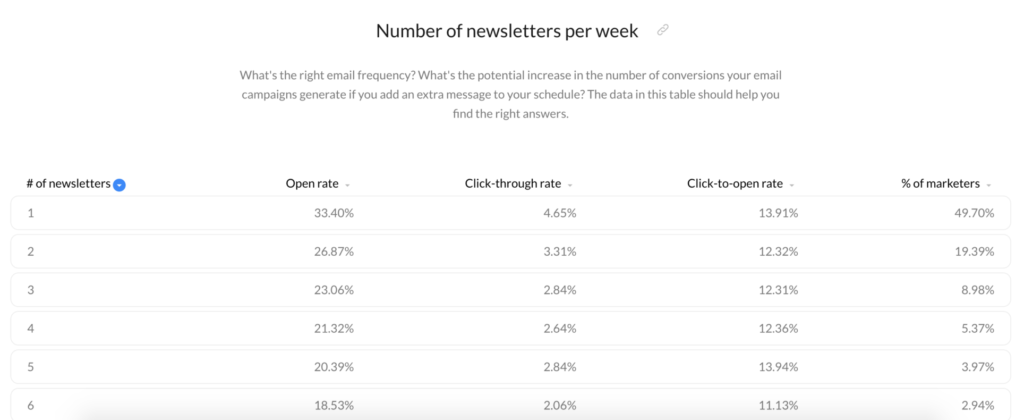
12. Get a Dedicated IP Address
If you’re sending your email campaigns using email marketing software, you’re probably using a shared IP solution. While for most marketers that’s the right approach, there are some downsides to it, too.
For marketers with smaller email lists, a shared IP solution gives more flexibility and more stable deliverability. For example, they don’t need to be as careful about their email schedule or engagement rates. That’s because the IP reputation is built by all marketers who use these IPs to send their emails.
At the same time, if these IPs are also used by some inconsiderate marketers, their behavior may affect the deliverability of everyone else using the same IPs to send their emails.
Naturally, the platform Compliance and Deliverability Teams are there to prevent and fix things like that. But there’s always a risk and you need to be aware of.
An alternative approach is to use a dedicated IP address. This is usually reserved for bigger senders, with substantial email lists (i.e., 100,000+ records) and a regular communication schedule. The main difference is that when you’re using a dedicated IP address, you’re the only one who’s building its reputation.
There are also some other differences between shared and dedicated IPs.
The bottom line is that if you’re a solid sender and you know that your email deliverability could improve if you used a dedicated IP solution, then you should look into it.
13. Improve Your Content
At the beginning of this article, we talked about how subscriber engagement affects your reputation and email deliverability.
We suggested reengaging and removing inactive contacts from your lists. But we didn’t talk about how to prevent your audience – or at least a percentage of it – from becoming inactive.
One way to do this is to keep improving your email content. Your emails should be interesting, engaging, and valuable – every time.
Although it’s easier said than done, here are a few ways how you can make sure your email content continues to engage:
- • A/B test frequently to pick the most-engaging subject lines, headlines, products, and articles in your messages
- • Ask your audience to provide feedback and suggest topics for future communication
- • Analyze the click-through data in your emails to select the best-performing calls to action (CTAs) and topics
- • Analyze the pageview data and time on page in your website’s Google Analytics reports to drive people to the best-performing pages
Keep in mind that the best way to A/B test your emails is to 1) test one thing at a time, 2) run tests continuously and not ad-hoc, and 3) think of them as evolution not a revolution.
This way you’ll know what elements of your message made the impact and you’ll give your recipients enough time to get used to the changes. The last thing you want to do is to confuse those who are actively engaging with your communication.
14. Balance the Text-to-Link Ratio
You might never run into this problem, but it’s worth mentioning it in this guide. One of the things ISPs look at when evaluating email quality is the balance between the amount of text and the number of links.
- • The text to link ratio needs to be reliable and relatable – providing good content value to your contacts. Sending them only clickable links is usually not one of them.
- • ISPs will allow fewer links from a domain with poor reputation that was already associated with abuse mailing, than they would for a domain with good reputation.
- • The rules seem to be quite simple. Stick to a single link for a short message (a few lines of text), or one per paragraph. Usually, ISP’s have no issue recognizing blog or site updates (e.g., first paragraph of an article, or just the title with a link to full article). ISPs seem to be rarely punishing senders for these types of links (if they do, it’s usually a domain reputation issue), so if that’s your business, then you don’t really have to worry!
If you do advertise products to your list, you should take it easy on the calls to action; two well placed links will do the job just fine.
15. Balance the Image-to-Text Ratio
When creating emails, you should also pay attention to how much of your message is images and text. The more text, the better your deliverability.
This doesn’t mean your emails shouldn’t contain images. That’s not feasible and no ecommerce business would allow that. But your message shouldn’t consist of just one big image and a footer.
Think about this practice both from the ISPs and the recipients’ perspective.
Many people use mailbox providers that block images by default. People pay attention to their first impression, and if all they see is a message with all its content blocked – they’re not exactly encouraged to open up that message.
That’s why having text in your emails (and ALT text for images) can help you improve your engagement and deliverability rates.
The same way the link ratio matters, ISPs also look at the ratio between images and text. This seems to be more of a space-ratio kind of thing. The recommended dimensions are usually given in the 60%-40% or 70%-30% ratio (in favor of text).
Nevertheless, emails with 50-50 ratios can also do quite well, so there’s not magic value. This is something that you need to test yourself.
16. Identify Yourself and Your Content
It all boils down to this.
People open emails that seem interesting, valuable, and entertaining. They also look at who the sender is – whether they’re trustworthy, reputable, and knowledgeable.
You need focus on all those things throughout the entire customer journey.
You don’t want your subscribers to feel disconnected when they’re jumping from your Facebook page to your website, and then to your email subscription.
Here are a few best practices for you to keep in mind:
- Don’t change the from name and address used to send your emails too often
- Have a consistent brand identity across all your marketing channels
- Keep your email layout changes subtle so that people recognize it’s you
If you’re a solopreneur, there’s also one more thing you could try – send emails using your own name instead of the brand name. The hypothesis here is that people are more likely to build a bond with a person rather than a fictional brand. But this can only work if you follow through with this strategy and don’t just use it on occasion.
If you succeed with this step, your audience will engage with your communication more and this will improve your deliverability.
Share or save this article.
LinkedIn
Facebook
Twitter
Reddit
Tumblr
Email
Print
17. Run a Reconfirmation Campaign
If all else fails, there’s one more solution called reconfirmation.
Reconfirmation campaigns are similar to reengagement programs, with one major exception.
After you’ve run a reengagement campaign, you still get to decide what to do about those who haven’t responded to your emails. Although we suggest that you remove them from your lists entirely, you may choose to try reengaging them through remarketing ads or even calling them on the phone, if you’ve got this kind of data.
With reconfirmation campaigns, there’s no going back.
First, identify the inactive contacts then send them a single email asking if they’d like to opt in to your list. You’re not asking them whether they’d like to stay on your list, but instead, you’re asking them if they’d like to re-subscribe.
After sending this message, anyone who doesn’t respond should be automatically removed from your database.
As for those who respond, move them to your active contact list and reach out to them to figure out what caused them to become inactive for such a long time.
This is by far the best solution for making sure your list is clean. Naturally, it’s also risky, which is why so many marketers keep it as their last resort.
Pro tip: In your reconfirmation email, add information about how people can re-subscribe to your list after the link in the message expires. This way, if someone ends up opening your message after some time, they’ll know what to do to keep getting your email updates.
Pro tip 2: While reconfirmation campaigns can be used for inactive contacts, they’re also good for the contacts whom you haven’t contacted with for a long period of time (e.g., more than one year). They can also be used at times where you know that your opt-in process wasn’t working properly and there may be people on your list who shouldn’t have been added to it.
Popular Posts
- March Holidays & Occasions to Integrate into Your Marketing
 by iLoyal
by iLoyal - February Holidays & Occasions to Integrate into Your Marketing
 by iLoyal
by iLoyal - Instagram Grid Previews have arrived!
 by iLoyal
by iLoyal - Why Should You Leverage Survey Invitation Emails
 by iLoyal
by iLoyal - Why CX is the Key to Survival in 2022 & Beyond
 by iLoyal
by iLoyal
Get the email marketing app with in-house access to design and data support.
Streamline the way you manage social media. No upgrades required to get all the features.
Build your business around Customer & Employee Experience
Easy ways to get started with iLoyal
- Start a Free App Trial
- Book a Discovery Call
- Use the Plan Builder

Just want the apps?
Sign up for a free trial by clicking the link for your choice of apps below. Upgrade to a paid plan when you are ready to start sending.
Email Studio: Free until contacts are added
Social Genius: Unlimited 14-day Trial
iLoyal SMS: Free until number is provisioned

Let's Chat!
Tell us what you want to accomplish with your marketing and we’ll connect you with the apps and team that fit you like a glove – even if it’s not iLoyal! Stop spending time searching and let experts guide you toward a marketing tech solution and great service experience.
Call during business hours @ 888-352-9889


Customize Your Service Plan
Choose marketing app licenses and service levels to customize a plan from nearly everything iLoyal offers – from email design support and content development to social posting and website design.
Questions? Contact us for a free consultation with our team of experts.
Call iLoyal at 888-352-9889 for a custom quote.
iLoyal Email Studio
Grow sales and create loyalty with an email marketing app packed with features and with access to experts in design and data.
We create love and loyalty.
Attract customers. Understand the market. Ace the customer experience. Drive sales.
We deliver the powerful technology you need to build customer relationships and stay top of mind with your audience. From branding and website design, from content ideation to campaign deployment, our caring experts are here to support you every step of the way.
Engage to Succeed
Get marketing ideas, keep up with best practices, be the first to know about tech updates, and more.

© iLoyal, Inc. 1999-2023. All rights reserved. | Privacy Center | Terms & Conditions

